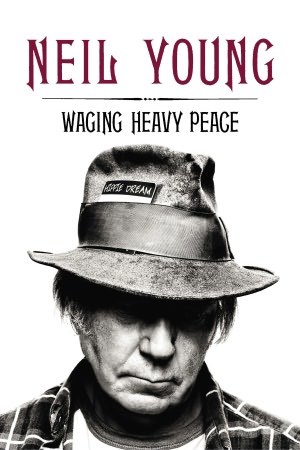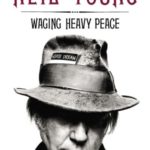
Blue Rider
Neil Young has beat the snot out of his faithful Les Paul “Old Black” in his own style for years now – purists can criticize his technique but they can’t deny the emotion and depth of his playing. And in the end, isn’t it how the music makes you feel that really matters?
Young’s debut as an author with Waging Heavy Peace could be looked upon in much the same way: some may criticize the manner in which his book jumps around in time and place – but the constant that truly counts is Young himself. His feelings, memories, and confessions were laid out on the pages as they came from his soul. And whatever an academic might say about the presentation, they’d be hard-pressed to argue with the result, unless their head gets in the way of their heart. Waging Heavy Peace is the real Neil.
Blame it on the broken toe that sidelined Young from live performance for a bit during 2011: “Idle hands are the Devil’s tools,” my grandmother used to say. In Young’s case, the unexpected time was applied to the computer keyboard and the result is Waging Heavy Peace, a combination of diary and memoir. The stories and memories are told as they come; fueled by a present-day incident, the weather, or the whims of the muse. The only timeline is what was actually going on in Young’s life during the period he was working on the book. In the meantime, a Buffalo Springfield memory might be followed by a scene from Young’s childhood … or perhaps a vignette from the Harvest sessions … or a bender with longtime friend and producer David Briggs … or a mini-essay on the importance to Young of perfecting his hybrid-powered 1959 Lincoln … or changing the way the world listens to music … or perhaps another Buffalo Springfield story. That’s just the way it is. If you were taking a long ride with the man, you wouldn’t keep interrupting his train of thought to get him to tell his stories in chronological order, would you? Right. Open up Waging Heavy Peace, sit back, and enjoy the ride.
Along the way, Young reveals himself to be a man who completely and utterly loves his family and friends – while not afraid to admit his failures along the way. There are few excuses to be found in Waging Heavy Peace – not that there are many needed – but the honesty pays the dues.
For instance, to know now that Young spent the early part of 2011 wondering if and when he would find new music in his newly-sober self to play with Crazy Horse seems impossible; but the words he wrote at the time were the truth as he felt it at that moment. And therein lies the key to everything Neil Young has done over the decades.
It’s a no-brainer to declare Waging Heavy Peace a great read for followers of Young’s music. But perhaps even better, it’s an excellent read for anyone who has questioned the man’s deviation from whatever path they expected him to follow over the years. Neil Young may be a better listener when it comes to his own muse than anyone you’ve ever known. And he’s happy with that.
That’s really all you need to know.



No Comments comments associated with this post